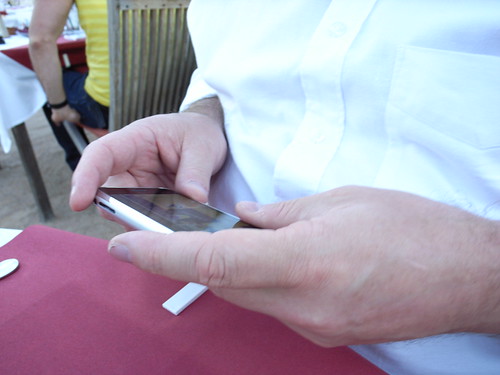 Although I don't share the optimism described by this article about touch interface (in the insightful Technology Quarterly in The Economist), there are some good elements discussed there. I recommend reading it in conjunction with Bill Buxton's perspectives about that very topic.
Although I don't share the optimism described by this article about touch interface (in the insightful Technology Quarterly in The Economist), there are some good elements discussed there. I recommend reading it in conjunction with Bill Buxton's perspectives about that very topic.
The article in the E gives an overview of touch interface (table, mobiles, etc.) showing how they have been around for quite a while as well as interesting quick descriptions of the available technologies. As with other technologies, I am less interested in the interface per se than how it evolved over time. See for example this description of the limiting factors:
"If touch screens have been around for so long, why did they not take off sooner? The answer is that they did take off, at least in some markets, such as point-of-sale equipment, public kiosks, and so on. In these situations, touch screens have many advantages over other input methods. That they do not allow rapid typing does not matter; it is more important that they are hard-wearing, weatherproof and simple to use. (...) But breaking into the consumer market was a different matter entirely. Some personal digital assistants, or PDAs, such as the Palm Pilot, had touch screens. But they had little appeal beyond a dedicated band of early adopters, and the PDA market has since been overshadowed by the rise of advanced mobile phones that offer similar functions, combined with communications. Furthermore, early PDAs did not make elegant use of the touch-screen interface, says Dr Buxton. “When there was a touch interaction, it wasn’t beautiful,” he says. (...) That is why the iPhone matters: its use of the touch screen is seamless, intuitive and visually appealing. (...) Another factor that has held back touch screens is a lack of support for the technology in operating systems. This is a particular problem for multi-touch interfaces. "
Furthermore, the article also deals with a topic I am researching (mostly with the Nintendo Wii and DS): the one of gestural language for tangible interfaces:
"Microsoft is also developing gestures, and Apple has already introduced several of its own (...) The danger is that a plethora of different standards will emerge, and that particular gestures will mean different things to different devices. Ultimately, however, some common rules will probably emerge, as happened with mouse-based interfaces.
The double click does not translate terribly well to touch screens, however. This has led some researchers to look for alternatives."
Why do I blog this? some interesting elements here about the evolution of technologies, especially showing how slow such interface (almost 20-25 years old) takes time to find its niche.